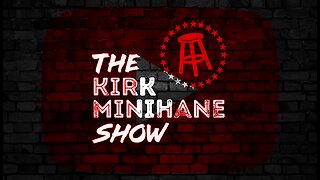Great Animated Map Shows Origins Of World's First Written Languages & How They Spread
Music: Kaddish (Angelic Instrumental) by Dhruva Aliman - Amazon- https://amzn.to/3dgKA52 - https://music.apple.com/us/artist/dhruva-aliman/363563637 - Spotify - https://open.spotify.com/artist/5XiFCr9iBKE6Cupltgnlet - The origins of ‘proto-writing’ can be traced back to Ice Age cave art, but full writing – defined as ‘a system of graphic symbols that can be used to convey any and all thought’ – is the invention of a complex, bureaucratic civilization. Theories abound on the origins of writing, but the first step on the journey is thought to have begun in the 9th millennium BC with the beginnings of agriculture. Numerous clay tokens have been found on excavations in the Middle East dating to this period, and these have been interpreted as counting devices, so that one coin shaped token carved with a cross would equal one sheep. By the second half of the 4th millennium BC these tokens were enveloped by clay ‘bullae’ (Latin for ‘bubble’) on which symbols representing the contents were scratched. As trade developed, clay tokens and bullae were eventually replaced with flat tablets, as three-dimensional tokens began to be substituted by two-dimensional symbols.
This system was simplified and refined so that by around 3000 BC, the scribes abbreviated their scratching’s to bring not just the idea of an object to mind, but also the sounds of the words.
The Five Oldest Written Languages-
1. Sumerian
When: c.3400 – 1 AD
Where: Southern Mesopotamia
Sumerian is the oldest attested written language. It was used by the people of Sumer in Southern Mesopotamia and is an isolate language, which means it’s not related to any other existing language. Sumerian continued to be used in written documents, usually in legal and administrative contexts, well after the spoken language was taken over by Akkadian, the date of which is still debated today.
2. Egyptian Hieroglyphics
When: 3200 BC – 400 AD
Where: Egypt
The symbols used in Hieroglyphics represented objects that actually existed in Ancient Egyptian life, with sentences for example composed from symbols for plants, body parts and birds. The key to their translation was the discovery of the Rosetta stone in 1799 (see the main image above) which has the same message inscribed in Hieroglyphics, Egyptian Demotic and Greek.
3. Akkadian
When: 2500 BC – 1st C AD
Where: Mesopotamia
Akkadian is a Semitic language, which originated in northern Mesopotamia and in time spread to encompass the whole country, finally taking over from Sumerian. The cuneiform script it uses was adapted from Sumerian script, resulting in many borrowed words and lexical merging. It developed into the lingu franca of the Ancient Near East but began to be replaced by Aramaic in the 8th century BC.
4. Eblaite
When: c. 2400 BC – 550 BC
Where: Ebla (modern western Syria)
Eblaite is very similar to Akkadian and also written using cuneiform script. Some scholars believe it may in fact be a dialect of Akkadian, whereas others argue it is a separate ‘sister’ language. In the past it has sometimes been defined as an archaic Akkadian dialect but is now widely agreed to be a stand-alone member of the East Semitic language group. It is known from 15, 000 tablets found mostly at the city of Ebla.
5. Elamite
When: ca. 2300 – 331 BC
Where: Modern day Iran
Elamite is also an isolate language and its interpretation is difficult. Its script was adapted from Akkadian and contains 130 symbols, fewer than most other scripts. The Elamite kingdom was the most influential kingdom to the east of Mesopotamia, until the arrival of the First Persian Empire in the 5th century BC.
Top 7 oldest languages still used today - Scientists confirmed that no language can exist if there is less than 100,000 people speak it. Do you know that there are 10 languages die out each year? It is not an uncommon problem anymore because there are 30,000 languages existing and disappearing. Surprisingly, there are still a few of them lasting more than 2,000 years. See Below-
TAMIL (தமிழ்)
Tamil scripts can be found when we visit some of the oldest temples in rock sculptures, potsherds, and monuments built by the historical rulers around 3rd century BC – 3rd century AD.
SANSKRIT
Sanskrit is an Old Indo-Aryan language, exists at least 6,000 years old and to be considered as the language of the Gods.
LITHUANIAN (Lietuvos)
Lithuanian is known as the oldest surviving Indo-European language. I
PERSIAN (فارسی)
Persian language, also called Farsi, belongs to the Iranian branch of the Indo-Iranian language.
ICELANDIC
Icelandic language is formed in the 9th century and is mostly spoken by the Nordic people.
MACEDONIAN (македонски)
Ancient Macedonian was spoken during the 1st millennium BC and gradually disappeared during the 4th century BC.
FINNISH (Suomi)
Not like Germanic, Celtic, Romance and Slavic language, Finnish does not belong to Indo-European, but Finno-Uralic language family instead.
-
 1:56:06
1:56:06
TimcastIRL
22 hours agoTrump Raises RECORD $52.8 MILLION In One Day, Bonus Uncensored Show w/Laura Loomer | Timcast IRL
8.57K71 -
 23:19
23:19
Scammer Payback
4 days agoWe Created the First Ever 𝗔𝗡𝗧𝗜-𝗦𝗖𝗔𝗠 Call Center
157K209 -
 DVR
DVR
LFA TV
12 hours agoTRUMP GUILTY…OF LOVING AMERICA! Ft. Hayley Caronia & Vish Burra | LAST CALL 6.1.24 8PM EST
4.41K9 -
 DVR
DVR
The Kirk Minihane Show
4 hours ago420 Show
2.09K -
 DVR
DVR
Patriots With Grit
3 hours agoSpeaking Up, Pushing Back | Daniel McGirr
876 -
 56:19
56:19
Total Horse Channel
2 days ago2024 Buckeye Reining Series | Saturday Night | 7:30 pm EST
4.36K -
 1:15:38
1:15:38
Steve-O's Wild Ride! Podcast
2 days ago $0.22 earnedG Eazy Opens Up About Falling Off - Wild Ride #217
9.66K10 -
 18:44
18:44
We Profit with Stock Curry
6 days agoUltimate Advice for Teens & Young Adults
14.3K9 -
 LIVE
LIVE
Lofi Girl
1 year agoSynthwave Radio 🌌 - beats to chill/game to
421 watching -
 21:00
21:00
Mr. Build It
23 days ago3 Ways to Build Garden Beds
21K15